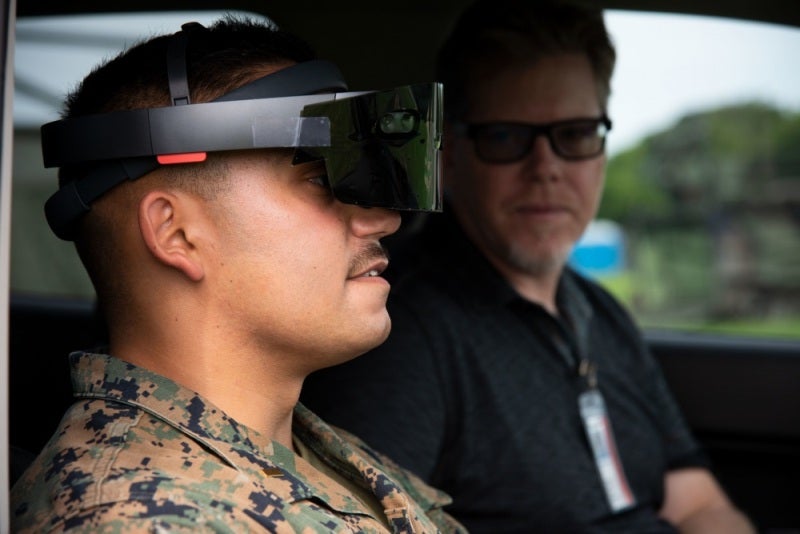
The US Naval Information Warfare Center (NIWC) Atlantic is developing an augmented reality-based (AR) radio frequency (RF) emission detection and localisation system to improve the safety of troops.
Known as Spectrum Hunter, the hands-free technology uses an AR display and is intended to safeguard US military personnel from unintentionally disclosing their location through RF waves.
Equipment such as hand-held radios, mobile phones, and Wi-Fi, as well as SOS beacons on aircraft and radar antennae on tanks and ships, pose safety risks to the warfighter.
An adversary can detect emissions from the devices if they are not properly turned off during a ‘radio silence’ command.
NIWC Atlantic information technology specialist Jessica Sinclair said: “The military principle, ‘If you’re transmitting, you can be found’ applies.”
A 10lb handheld tablet and sensor are currently in use to assist military members in detecting and locating their own radio wave source.
Sinclair said: “The Spectrum Hunter system under development is hands-free as the user packs a similar but smaller geolocator receiver in a backpack and wears a headset inside a helmet that allows them to see images of RF waves on an augmented reality screen superimposed over heavy sunglasses.
“The helmet is fitted with a sunshade so the equipment operates outdoors.”
Operators can get more information on detected RF waves from the AR display using verbal commands or hand gestures.
The heads-up holographic user interface enables the detection of the RF emission source while avoiding distraction from moving people or vehicles.
Sinclair added: “Our team is initially focusing on detecting handheld radios and will expand the scope later to detect cell phones and other devices. In the future, we plan to modify it to identify RF waves emitting from enemy forces.”
The NIWC Atlantic team demonstrated the Spectrum Hunter prototype during the Fight the Naval Force Forward Advanced Naval Technology Exercise East last month.
The exercise was held between 9-20 July at Marine Corps Base Camp Lejeune in North Carolina.
The developers sought feedback from military members and other stakeholders to improve the technology.



